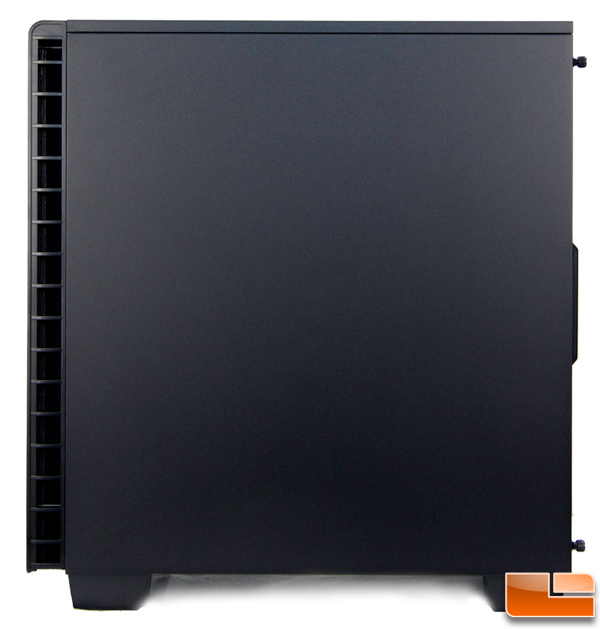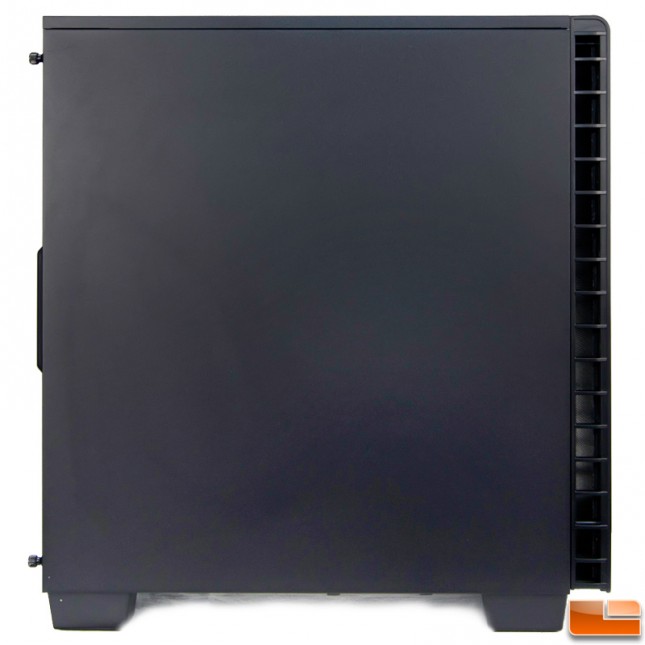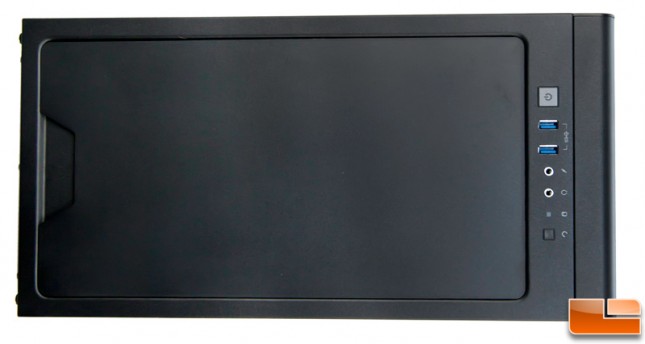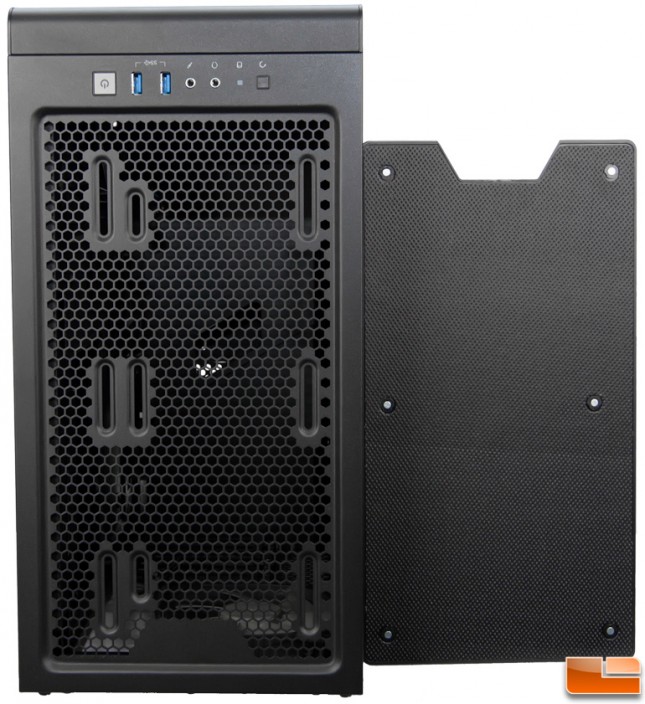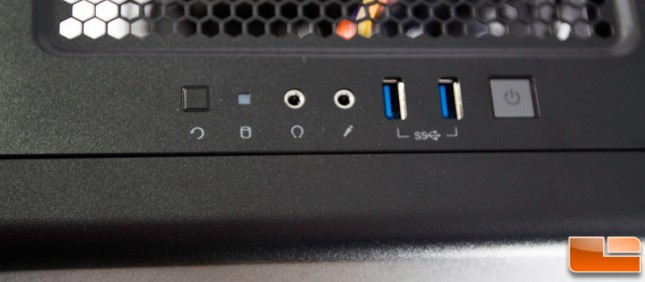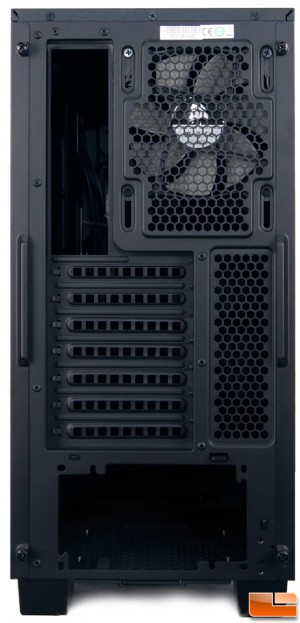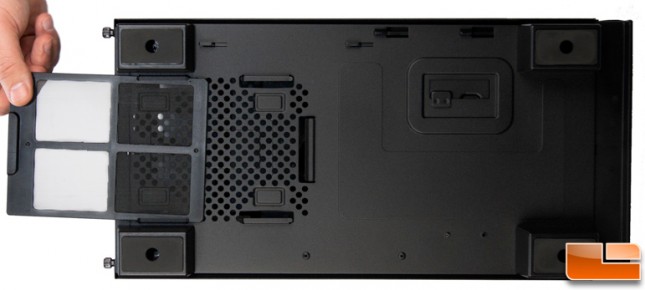Corsair Carbide 400Q Silent Mid-Tower Case Review
Corsair Carbide 400Q External Impressions
Looking at the Carbide 400Q, it’s easy to mistake it for the larger 600Q but there are major differences as we’ve discussed a bit already.
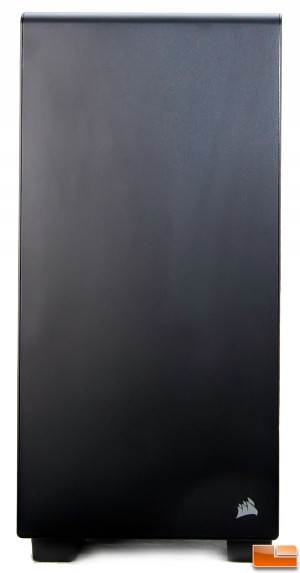
The front is virtually featureless save for the Corsair logo and the curved top that rolls back to the roof of the chassis. The only difference from the 600Q is the lack of door at the top which obviously is not needed since no 5.25″ bays are included.
The left and right sides are identical with just blank panels and ventilation holes along the front perimeter that are otherwise invisible from the front view.
On the 400Q case, the left side is just as described above but on the 400C case, this panel would contain a windowed door so the internal components are visible when closed.
Looking at the top, it has what looks like a large tray carved into it behind the I/O panel which is another of the design departures from the 600Q.
In truth, it’s a tray of sorts, made mainly of mesh pentagons and optionally covered by a magnetic panel that’s backed with sound proofing material. This is a pretty slick design and offers a good bit of flexibility as there are numerous variations of ways to fasten fans and/or radiators here though at the cost of forfeiting the cover to keep a literal dampener on the noise. On the 400C, this magnetic cover is a mesh air filter rather than a solid cover so if you plan on mounting cooling features in the top of the case, that would be the better model to get.
The I/O panel is located sensibly along the top front edge and is comprised of the usual components – reset switch, HDD activity LED, headphone jack, mic jack, dual USB 3.0 ports and power switch. Simple. No fan speed switch as with the 600Q.
The rear shows that the PSU resides at the bottom which is another difference from the 600Q and is a more traditional layout. There’s a total of seven expansion slots with mesh alongside with a position adjustable exhaust fan.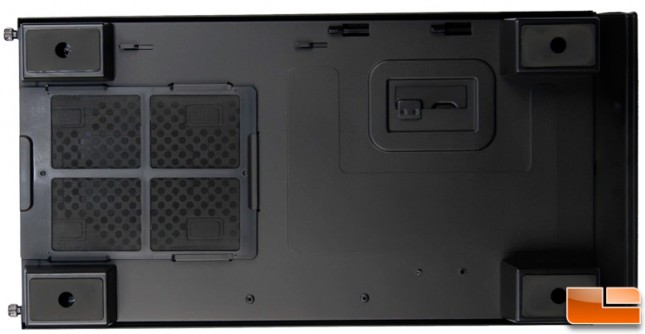
Underneath there are four block feet with non-slip pads and the tab from the 3.5″ drive cage can be seen where it overlaps in the hole provided when mounted.
For the PSU, there’s a small and easily removable dust screen that’s not magnetic like the others but is held by guides and snaps in with the help of a small plastic tab on the top of the filter near where you grab it pull it out. It just requires a little bit of downward pressure to overcome the tab lock and makes for a simple and effective design.

